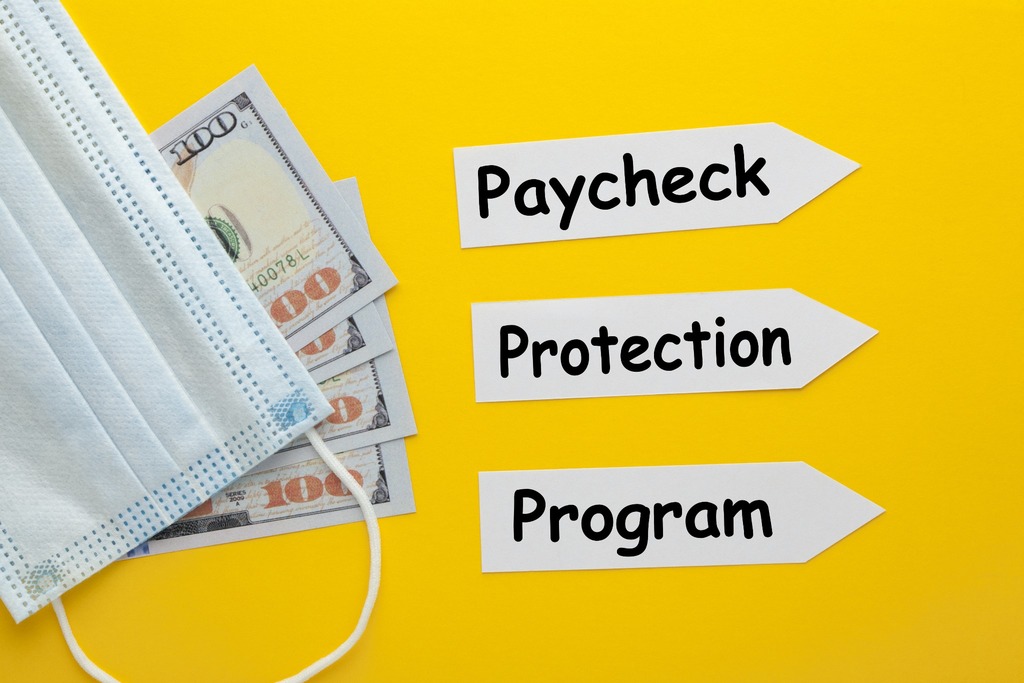
How Does PPP Forgiveness Work? Where Do I Allocate the Funds?
With a new round of Paycheck Protection Program loans available, many small businesses are eager to take advantage of the help. The good news is that this time there is a $2 million cap, making it more likely to help companies that genuinely need it. After receiving your funds, though, you’re probably wondering, “How does PPP forgiveness work?”
Pretty much everything related to COVID-19 has created confusion. From loans to grants to unemployment eligibility, it can feel like there are more questions than answers.
If you’d like expert, compassionate help as you navigate the PPP or other funding options, reach out to Fisher Bookkeeping. Our friendly team has offices in Portland, OR, and outside Lexington, KY, to serve clients nationwide. We work to remove the overwhelm so that you can work on growing your business.
First, Let’s Clarify What the PPP Is
As the coronavirus pandemic escalated in 2020 and states mandated closures of most businesses, Congress passed the CARES Act. This Coronavirus Aid, Relief, and Economic Security legislation attempted to alleviate the economic crisis that ensued.
The Paycheck Protection Program (PPP) is the cornerstone of this act. These funds were available last spring and early summer through Round One. Round Two soon followed when the first funds ran out. The previous congress then approved new legislation at the end of 2020 that offered $980 billion in relief. Round 3 of the PPP is the primary piece of that package.
These funds are moving right now, as of February 2021. There is no word yet about funds running low, so be in touch with our team if you want to take advantage of the program.
The PPP packages aim to help employers pay their employees. The funds come to business owners as loans, not grants. If recipients meet specific guidelines outlined below, however, they can apply for total forgiveness of these loans. And that is exactly where many business owners are right now, trying to navigate the forgiveness phase.
How Does PPP Forgiveness Work?
From the get-go, the PPP had problems with implementation. Confusion around who was eligible and how to apply was common. Perhaps that’s to be expected when massive action needs to happen very quickly. However, more than five million businesses did receive PPP funds and now need to complete their forgiveness applications.
Here are some key elements to keep in mind when it comes to PPP loan forgiveness:
- You must use at least 60% of the funds for payroll. Depending on the size of your loan, this percentage may be higher.
- Other funds can go toward expenses such as rent, utilities, and operating costs.
- If you don’t meet the required percentage toward payroll, part of the loan may still be eligible for forgiveness.
- Only funds used in the 24 weeks after loan disbursement are eligible for forgiveness.
- Unforgiven loans will have a 1% interest rate and a five-year repayment period. These payments begin ten months after the covered period ends or after a forgiveness decision arrives, whichever comes first.
Fortunately, most of our clients are able to use 100% of their PPP for payroll. With five months to use 2.5 times their payroll, meeting the first requirement above was simple for most companies. This fact makes forgiveness complete and easy to prove.
Forgiveness applications come from the Small Business Administration, but you must submit yours through the lender that processed your loan. Many lenders, such as Beneficial State Bank, send you a notice when your forgiveness application is available.
As with anything financial for your business, well-kept records are critical. To receive full forgiveness, you must be able to prove that funds went to the right people and places and in the appropriate amounts. Talk with your bookkeeper or schedule a call with our team to make sure you have all the necessary details.
Can I Receive a PPP Loan Twice?
Yes, you can! If you meet the eligibility requirements for this round of PPP, you can receive funding even if you already did the first time. Many small businesses will find that they are eligible a second time.
Some of the requirements for a second draw include:
- You have used the money from your first loan.
- You are still in business and operating.
- You were in business prior to February 15, 2020.
- You do not have more than 300 employees.
- You can show at least a 25% reduction in revenue over matching 3-month periods from 2019 and 2020.
If you need help getting your financials caught up to prove this revenue reduction, schedule a time with our experts. We want to see you receive everything you’re eligible for, and we can help!
The new round of PPP funding carries mostly the same terms and conditions as the previous one. It also expands the list of approved expenses you may cover with your loan.
How Do I Allocate CARES Act Funds?
Before you receive loan forgiveness, we suggest listing the funds as a current liability. This category can also apply to grants that you receive as part of COVID relief efforts. Many private and not-for-profit groups have been funding small business grants over the past year.
As mentioned earlier, it’s crucial to track how you use PPP funds to prove eligibility for forgiveness. Some grants may also require you to show how you spend the money. Transparency and accuracy are critical.
Some businesses have chosen to open a separate bank account to house these funds, making it easier to see where the money goes. This step isn’t necessary, however, if you’d rather not add more work. Funds can commingle as long as you document which money went to which expenses.
You can also create a sub-account in your bookkeeping files for the PPP loan. Again, this can make it clear where the funds go so that you can account for them when seeking forgiveness.
After navigating the PPP forgiveness process, the next step is to figure out how to account for those funds. At Fisher Bookkeeping, we suggest that you move them to “other income” in your accounting system once you receive forgiveness.
It’s important that your CPA can easily locate these funds to differentiate them from earned income and other grants you may have received. There are different tax credits and rules for each set of funds.
Once all is said and done for your PPP loan or loans, be sure to keep each piece of documentation. With the speed and scope of the CARES Act and the Paycheck Protection Program, there could be gaps or questions that come up further down the road.
Are PPP Funds Taxable Income?
This question has had significant confusion around it, but the second stimulus package passed in December 2020 cleared things up considerably. The forgiven amount of your PPP does not count as taxable income. PPP-covered business expenses are still tax-deductible as allowed by law. It’s like a double win! Someone gives you the money to spend, and you still get the deduction!
As always, talk with your tax professional about your specific situation.
Remember that You’re Not Alone
Running a company during a pandemic and economic crisis is one of the most stressful things you will face as an entrepreneur. And trying to understand how PPP forgiveness works can be frustrating. Let go of some of that worry by getting help with your business finances.
Fisher Bookkeeping is a full-service firm here to serve clients as they build and grow their businesses. From setting up a brand new system for a startup to sorting out years of untended books for an established business, we can do it all. There’s no judgment here.
Our teams in Portland, OR, and near Lexington, KY, take care of clients around the country. Let’s connect today and see how we can serve you.
About the Author Barb Fisher
Barb is the CEO of Fisher Bookkeeping, an outsourced bookkeeping consultancy that provides small businesses with a full-service financial department. Her favorite aspect of work is to break down the accounting to meaningful bits, so entrepreneurs can make a powerful difference in their own business. She's also a power lifter (squat: 215, DL: 270).
Related Posts
My Journey with Hello7 Coaching Transformed My Bookkeeping Practice
Growth Scale Coaching: Benefits for Bookkeepers and Financial Managers
Preparing Your Business for a Successful Exit
7 Essential Bookkeeping Tips for Busy Entrepreneurs




